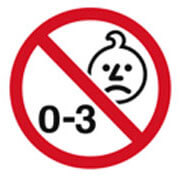There are many times when a toy will specifically say for ages 8 & up and a younger child will ask for it. I’m guilty of letting my kids play with things geared for older kids, I also let them play with things that they are considered too old for. I feel the ages are a guideline, but we as parents truly know if our children are capable of playing with the toy or not.
Let’s take LEGOs for example. Now besides the obvious, under-three age group, I don’t really adhere to the ages listed on the boxes. My oldest son was ready for the “8+” LEGOs by the time he was five. He was tackling the LEGO Star Wars Imperial Star Destroyer well before the recommended age of 9. With more than a thousand pieces, I can see why the age suggested was “9 to 14”, but since he was already an expert brick builder, we felt confident he could tackle this larger set.
On the other side of the coin, my three year old often plays with toys geared for younger children. With his autism and other developmental delays, he isn’t quite ready for a lot of toys with age recommendations over three. He often sticks with toys like the Fisher Price Laugh and Learn line geared for little ones “6 – 36 months”. I have to tell friends and family buying toys for him to ignore the ages and pay more attention to the skills he will learn from it.
The time to pay attention to the ages listed is if the toy is intended for a child under 3. You wouldn’t want your little one to choke on small parts, so make sure you look for the symbol on most boxes with the sad face and “0-3” with a red circle and line through it. It’s the universal sign that this toy may have small parts.
You know your child best, so there are many times when you can ignore that age recommendation. Just make sure that you are helping your child feel successful in their play with toys that you are confident they are ready for. Sometimes toys like LEGOs and Transformers have many parts that can frustrate a child who hasn’t mastered the skills needed to play with them. Make sure you play with your kids with some of these toys to gauge how well they are doing. You can tell easily if they aren’t ready for a certain toy by how much they actually play with it and how many times you are asked to help out. I can tell you, I’ve quickly become a master at Transformers and have even spent a long night or two building larger LEGO sets with instructions that seem more complicated than a quantum physics equation.

